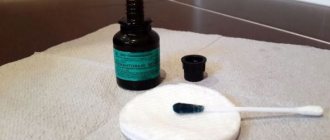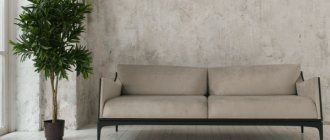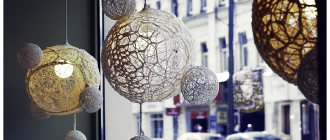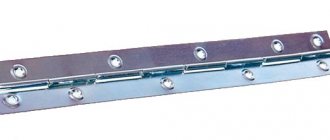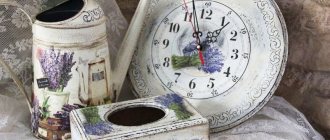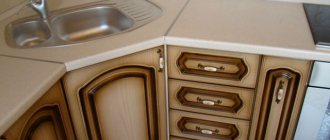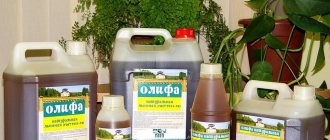by Alexey | Crafts Decor Workshop Furniture Cheap Accessories | Saturday, September 23, 2017
| Follow Make-Self.net on Facebook and be the first to read our articles. |
Using the simplest tools and materials, you can give wood the most original texture of patterns and ornaments. Sometimes the most ordinary nails can turn a simple smooth board into a beautiful textured building and finishing material or piece of furniture. This list is by no means complete, but is just a starting point to start working with wood and transforming an ordinary board into an element of art. You need to pick up a hammer and a nail and use your imagination to start working with wood.
We always try to provide you with simple ways to transform your home. This material confirms this.
Now let’s look at specific examples with photos of 12 simple patterns on wood that you can make with your own hands using simple tools.
Revealing wood texture using dyes
Revealing the texture of wood using dyes
The patterned shimmer of maple and birch wood, as well as trees of other species, will appear deeper and shine with beautiful shades if you choose this particular finishing method. Here's what you need to know to be successful in identifying wood grain.
Those of you who have been successfully using ready-made stains for many years will most likely be surprised: “Why do you need to use dyes? Who needs them? Just don't rush to conclusions. Compared to pigment stains, which are most often found on sale, dyes produce purer colors that better highlight the natural shine of wood. The difference will be more noticeable if you use dyes to tint dense wood that does not tolerate regular stain, or patterned wood, such as wavy maple. Stain will usually make the wood grain look a bit cloudy, while stain will add impressive depth and richness. These differences are clearly visible in the figure below.
Curly Maple Toning
Stains and dyes have different effects on the appearance of wood, as they color it in different ways. Pigment stain only partially penetrates the wood; the coloring effect is created by tiny pigment particles settling in the smallest cracks and pores. If the wood has a smooth and hard surface (for example, maple), then the pigment particles simply have nowhere to stay.
Gel stains, which have a thick consistency, form a film on the surface, but also do not penetrate deeply into the wood. They prevent stains but hide the grain pattern. In contrast, dyes, being completely dissolved, penetrate deep into the wood along with the solvent and change the color of wood cells (due to these properties, dyes are sometimes mistakenly called mordants). In this case, the surface becomes as if transparent. Some pigment stains add dye, but this combination still does not solve the problems inherent in dense wood.
How to brush, stain, wax and patina wood (texturing)
Natural wood attracts the eye with its beautiful texture. The alternation of soft and hard growth rings creates an interesting pattern with bends, waves, fancy knots, cracks and wormholes. This truly creative texture was created by nature itself, and our task is only to emphasize it, reveal it, and make it tangible. all technical processes associated with this are called wood texturing.
Brushing, staining, patination and waxing techniques are used to texture wood.
Brushing , from English. Brush is a technique aimed at enhancing wood grain by combing out soft fibers. Wood has its own specific texture pattern due to the peculiarities of the growth of fibrous layers.
EVERYTHING YOU NEED FOR THIS ARTICLE IS HERE >>>
Soft fibers perfectly absorb water and coloring compounds and are easily amenable to mechanical action, in particular, combing, while hard fibers, on the contrary, protrude after combing with hard combs. Comb out soft fibers using special metal brushes.
The working part of such brushes consists of bundles of rigid corrugated wire, fixed in several rows on a wooden or plastic base with a handle (for manual combing) or clamped into a metal disk like attachments for power tools (drills, grinders, engravers) to mechanize the process.
You can buy such brushes at any construction or hardware store. After brushing, the wood pattern acquires a pronounced relief, but only to the touch. To visually emphasize the resulting texture, tinting with stains, waxes, paints and patinas is necessary.
Stain, stain or glaze is a special composition in the form of a liquid for impregnating and tinting wood.
Modern stains are mainly divided into aqueous and non-aqueous (based on organic solvents, alcohol or wax). The main difference is that water stain is easier to apply evenly to the surface and deal with smudges, but after drying it is still afraid of water.
Non-aqueous stain dries faster, but is also more difficult to apply evenly. Thanks to the presence of waxes and oils and other additives, it is able to withstand atmospheric conditions, but has a pronounced odor. For decorative interior work, water stain is the best choice.
Stains are applied to dust-free wood with a brush or cloth swab. At the same time, the composition does not form a surface film, but penetrates to a certain depth, being more intensively absorbed into the soft fibers, due to which the texture of the wood is emphasized even more.
For more intense coloring, you can successively apply several layers of stain with the obligatory drying of each layer.
Compositions for tinting wood (stains, stains, glazes) can be bought both in construction stores and in art stores.
I will give the highest quality examples of compositions (one might say my favorites)
Wood dyes: choosing options
Dyes are sold in liquid or powder form, and any dye can be dissolved in one or more solvents: water, denatured alcohol, or oil (toluene or turpentine). When starting to work with dyes for the first time, buy a water-soluble concentrate or powder, which is easy to use, has good penetrating properties and good resistance to fading.
Regardless of the tinting method, end grains always pose a problem because they absorb more dye or pigment, becoming darker than the surfaces formed by the longitudinal grains. For a more even color, try one of the two methods below. Before tinting, sand the end grain with a finer abrasive than the rest of the area, or prime it with a 50:50 mixture of shellac and denatured alcohol and, once dry, lightly sand with 220-grit sandpaper.
Applying dyes to wood
In most cases, we prefer to work this way with water-soluble dyes. When the project or its parts are ready for finishing, we sand the wood as usual and wipe it with a wet cloth to raise the so-called lint. Let it dry for 24 hours and then lightly sand with 320 grit sandpaper. By removing the lint, we prevent it from lifting after applying the coloring solution. Then we dilute the dye as shown in the photo.
Boil water, let it cool for a minute and add dye powder to obtain a concentration of 30 g/l. Let the solution cool to room temperature
Mix the solution thoroughly and strain it through a paper filter or nylon stocking to get rid of undissolved powder particles
Using glass or plastic dishes, prepare such an amount of solution so that it is enough for the entire job and you do not have to re-achieve the desired color by mixing a second portion. We check the result on scraps of the same wood from which the project parts are made. Using a regular sponge, apply an aqueous solution of dye to the wood, spreading it in any direction, trying to quickly cover the entire surface evenly to avoid the appearance of spots and streaks when covering already dried areas.
Omissions and drips should also be avoided. We process all sides of the finished product at once. To make it more convenient to work with relatively small objects, if possible, we divide a large project into several component parts or tint all the parts before assembly. After applying the solution to the entire surface, you should immediately wipe off the excess with a soft cloth.
Working with alcohol dyes
If you decide to use alcohol-soluble dyes, keep the following in mind:
- Dissolve them only in denatured ethyl alcohol. Do not use isopropyl alcohol. Do not heat this flammable solution.
- Apply the alcohol-based coloring solution by spraying to avoid streaking due to rapid evaporation of the alcohol. Use a compressor-assisted sprayer rather than an electric sprayer. To tint small items, you can use a hand sprayer with a rubber bulb.
- To tint pine wood, which is most prone to stains, it is recommended to mix an alcohol-based coloring solution with shellac and apply the toner to the surface by spraying. Dissolved shellac is not absorbed into the wood, but forms a thin film on its surface.
Correcting the result of wood tinting
If the color looks darker than planned, it is better to lighten it immediately. In some cases, when the result is too far from your expectations, it is possible to return to the starting point. Rinse off most of the dye with water, then remove the rest with regular household chlorine bleach. If you want to darken the wood, apply the same or a stronger color solution again.
Removing excess composition ensures uniform coloring. If you applied the solution with a sponge, wring it out and run it over the surface again.
You can use a wet cloth to lighten the surface even if the dye has already dried, but you will achieve the desired result faster if the wood is still damp
Once you have mastered the techniques of working with dyes and learned how to choose the right color, start experimenting with the color palette. Once the surface is dry, add a different color dye to create a mixture of two colors. For example, add red dye to make the base tone warmer, or blue dye to create a cool tone. If the color looks the way you wanted, dry the surface thoroughly. Dry wood will fade, but a clear varnish will return it to the brightness of color and beauty of the design, as they were when the dye was applied.
Any coating can be applied over the dye, but be careful if you decide to use a water-based solution. When applying water-based varnish with a brush over water-soluble dye, the latter may re-dissolve and mix with the varnish, making it cloudy. Aerosol application will help avoid this problem.
Source: remstd.ru
Artificial aging of wood
Aging of wood is a long and painstaking process consisting of mechanical processing of wood and work with paints and varnishes. Leon42 associates this method of finishing wood with naturalness, antiquity, and folk culture.
According to leon42 , buying furniture and brushing it with a metal brush does not make it old, but simply scratches it or, at best, creates a textured surface. Furniture bought in a store - made of slats and “skinny” - is not suitable for texturing; it looks rather sad and defective.
Brushing equipment
The procedure is considered the simplest and most accessible method of visual aging of wood at home.
It is enough to have a minimum of equipment. Even using only manual labor, you can achieve excellent results. To work you will need:
- Metal brushes of varying hardness. With their help, the primary (rough) removal of soft fibers from the treated wood is carried out.
- Sandpaper with different grain sizes. It is needed for rough cleaning after initial processing and final (final) polishing.
- To give the surface being treated maximum decorativeness, you need to prepare stain and other similar products.
- For final processing, you will need varnish, which is applied to the work surface after the brushing procedure is completed.
Power tools
All work on aging wood can be significantly simplified by mechanization. To do this, you can use either electric drills or angle grinders (grinders). To go with them, you will need to purchase wide or flat brushes of the following types - metal, polymer with an abrasive coating, sisal or hair.
Tinted oil
We use black tinted teak oil. You need to apply it with a piece of cloth. Next, wait about a minute and wipe it off with a clean rag. Already at this stage we get a contrasting wood pattern. But we won't stop. Apply dark green wax to the surface. The result is a deep green tint. This method of finishing wood looks good in the interior. For example, I have a wall in my living room decorated in a similar way. Different shades appear in different lighting.
You can achieve the desired effect by alternating tinted oil and colored wax.
Glaze
The glazing technique came into decoration from painting, and consists of applying paint in translucent layers. I didn’t have to look far for an example - a beautiful chest of drawers, painted in this style, stood right in the studio. Those gathered repeated this technique on tablets. The sequence of actions turned out to be simple: apply a base coat of paint to the item, dry it, and then work on top of it with a wet brush with a small amount of paint. Each layer should be allowed to dry so that the paint is applied in gentle layers without mixing.
Advice. Instead of water, use a special thinner - it will allow the paint to maintain its thickness and color saturation, the drawing will be transparent, but more clear.
Wax + paint
This method is very similar to the third option, but we will choose a light olive color - and we will not treat the fibers with wax before applying it. After the paint has dried, we’ll go over the workpiece with sandpaper, freeing the protruding fibers from the color. As a result, they will have less contrast. Next, we treat the surfaces with oil the color of larch wood. It has a reddish tint, which in combination with paint will give an interesting effect.
Feel free to overlay different colors and shades
Two in one: beautiful appearance and protective barrier
To give wooden surfaces a brighter appearance and increase their service life, the following types of treatments are used:
- Glazing is the application of a colorless coating.
- Varnishing.
- Waxing.
- Polishing.
- Stain treatment.
Transparent paints are usually used to preserve texture on wooden surfaces. Their composition includes various oils, synthetics, natural ingredients and wax. Insects and pests can damage wood. To protect it, preparations are added to the composition of the treated product, which perform both a preventive role and rid the wood of existing pests.
With the development of the painting industry, new types of multifunctional paints have appeared, which include:
- antiseptics;
- light stabilizers that save the tree from direct sunlight;
- oils and other trace elements.
We imitate the structure of wood with acrylic
This master class will be of interest to anyone who has furniture that is of good quality, functional, but completely inappropriate for the interior of the room.
It is not always possible to remove the old varnish and re-coat the surface with a new one. Especially when it comes to repainting it in a lighter color. And yet, it happens that furniture does not have its own wood structure, that is, plastic, chipboard, metal.
We use a similar method when we paint refrigerators, imitating the structure and color of kitchen facades.
For work we will need the following materials:
- Dresser.
- Alkyd primer.
- Sandpaper.
- Acrylic paint for furniture.
- Water-based acrylic varnish.
- Brushes of different thicknesses and densities.
- Rollers.
Let's get to work!
We had to repaint the chest of drawers to match the new furniture in the room. Furniture color “Bleached oak.” The photo below shows the armrest of the sofa.
The challenge was not only for the color to match, but also for the structure to be similar.
We begin work by removing all the handles, sanding the surface and carefully priming it.
After the primer has dried, we begin to cover it with acrylic paint.
We use paint of several shades, similar in tone and color, not completely mixed with each other. We immediately begin to apply the paint lengthwise with a roller, so that the edges of the roller form stripes-furrows.
Next, you need to use a brush with different bristles to enhance this effect.
Repeat scratching with a brush until the paint is completely dry.
We also use a brush to paint in different shades, achieving the effect of wood.
This is what we ended up with.
Next we started decorating: we lightly patinated the shelves. But if you wish, you can decorate it however you like.
The last stage is to cover everything with several layers of colorless acrylic varnish.
DIY methods for aging wood
Despite the variety of glossy facades, interior elements made of antique wood remain in demand. Purchasing such furniture will cost a pretty penny. If you don’t want to spend too much money, you shouldn’t give up the idea of having an aged chest of drawers or a table. You can try to age the furniture yourself. Let's try to figure out what technology is used to process antique wood with our own hands. After all, natural conditions age a tree for many years. And to get results quickly, you will have to age the wood artificially.
Impregnation
This glazing composition gives the wood various properties. There are:
- antibacterial impregnation
- water-repellent composition
- impregnation providing protection against insects and rodents
- tinting impregnation
Impregnation of wood is carried out in two ways: in hot-cold baths or under pressure. At home, it is more convenient to use the first method. To do this, the wooden part is first dipped into a heated impregnation, then into a cold one. Thanks to the temperature difference, the unique properties of the material are ensured.
Why do they age wood?
You won't find antique furniture in every home. It should be used where appropriate. The design of the room must be thought out in the appropriate style so that antique products look decent.
Typically, the procedure for aging wood is performed for a specific purpose, namely:
- Satisfy the taste of the inhabitants of the home.
- Save money on antique items. It is much cheaper to buy inexpensive furniture and age it artificially.
Using certain methods of aging wood, you can get exclusive things. Both the entire product and its individual parts are processed. Particular attention should be paid to such items as chests of drawers, sideboards, bookshelves, mirror frames. They are aged most often, since it is difficult to imagine a vintage-style interior without these items.
Aging methods
The process of processing antique wood with your own hands is done in several ways. The main ones are:
- Chemical treatment – used for hardwood.
- Firing or heat treatment is a universal option.
- Mechanical processing or brushing - this method can be used to process products made of oak or pine needles.
Furniture for aging is selected to be massive, with a rough texture, so that in appearance it resembles hand-made objects of past centuries. Before processing, it is better to disassemble the furniture into individual parts. This will make it possible to treat even hard-to-reach places.
To make it easier to achieve the effect of aging wood, it is better to purchase material that has already been damaged by the bug, with minor chips, cracks and knots.
If you are doing the process of aging wood yourself for the first time, then it is better to practice a little on separate unnecessary bars. The quality of the result depends on how well the solution, stain or varnish is applied. It is recommended to carry out work outdoors so as not to harm your own health.
How to make new boards or furniture look like old products? Now you know that several techniques are used for these purposes. Let's take a closer look at each of them.
Mechanical restoration
Wood can be aged mechanically in products made from species such as pine, spruce, and larch. It is these types of wood that have a pronounced texture, the presence of layers of fibers with varying degrees of hardness.
The main task during machining is the formation of various types of chips, potholes, and cracks artificially. This can be achieved by the following actions:
1. Wooden surfaces are processed using an ax or a special grinding machine. They are randomly marked with potholes of varying depths and widths. The block is hewn, but one should not strive for special accuracy and symmetry.
2. After this, we proceed to sanding the surface using a brush with metal bristles. It will be easier to do this with a grinder and an appropriate attachment. During processing, grinding is carried out along the grain until the caused potholes and chips take on the appearance of naturally formed defects in the wood.
3. Then we move on to the second degree of grinding. At this stage we use a brush with soft bristles and sandpaper. During this treatment, soft fibers are removed, leaving coarser ones. Thus, we get an uneven tree structure. Using the same method, you can additionally highlight knots and cracks.
4. At the next stage we work on the color of the wood. It is necessary to bring the light new wood as close as possible to the shade of the board that has darkened with age. Here you can use stain or dark acrylic-based paint.
5. When the applied product is completely dry, sand the surface with fine-grain sandpaper. At the same time, we try to perform all actions carefully. The paint should be removed from the hills and ridges, but it remains in the potholes.
6. At the final stage, cover the treated surface with colorless or light yellow varnish and dry completely.
On video: a method of mechanical aging of a wooden board.
As for the question of how to age wood on small items, such as small pieces of furniture or wooden dishes, here the process is a little simplified. The surface to be treated is thoroughly cleaned from wood dust with a brush until the desired effect is achieved. Subsequent painting and opening with varnish occurs identical to the previously described process.
Brushing should only be done by hand using a wire brush until small dents and ridges are reached.
Heat treatment
Wood can be aged by heat treatment. A special feature of this aging method is the complete absence of mechanical processes. The disadvantage is a certain danger to human health during work. Therefore, they should be performed in the fresh air, while protecting the skin, eyes and respiratory organs.
Heat treatment or firing is carried out by exposing the wood to direct fire. You should use either a torch or a blowtorch. It is necessary to burn to a depth of about 3 mm.
If heat treatment is carried out superficially, the aging effect will not be as pronounced as with stronger firing.
After finishing the heat treatment, perform the following steps:
- Using a metal brush or grinder with a bristle attachment, begin to scrape off the layer of soot to the desired degree of antiquity. There is no need to paint the surface. The soot will highlight the entire structure.
- Sanding is done with sandpaper.
- A finishing layer of transparent varnish is applied to aged wood.
Chemical method
You can age wood by chemical treatment using such means as alkaline compounds or ammonia. You can use household chemicals that contain alkaline components.
The essence of the process is that when the product gets on wood, it burns its soft tissues. The structure of wood is distinguished by the presence of hard and soft tissues. When processing antique wood, soft tissues are removed in various ways.
In this case, the surface layer of wood is burned with alkali, which simultaneously colors it gray.
The next step is the process of washing off alkaline residues. To do this, you can use vinegar or citric acid. A solution of citric acid is prepared in the following proportion: 1 teaspoon of acid per glass of water. If vinegar is used, it should be a 9% solution. Acetic acid should not be used. Next, the treated surfaces are well dried, sanded and varnished.
Aging wood using all the methods listed above is quite simple if you put in the effort and effort. You can give the desired effect to any surface. Can be aged like small household items, furniture or even wooden floors.
Safety precautions
The work of brushing, although not particularly difficult, requires a lot of effort and time. For high-quality decorative processing, you will need to purchase expensive paints, stains and other products. Vapors from chemical solutions, the smell of paint and varnishes are especially harmful to our health - we should buy respirators, however, even during mechanical processing there are many points from which we must protect ourselves:
- Wear gloves, use a respirator and safety glasses;
- If work is carried out using electric machines, follow all safety requirements that protect against electric shock and damage from rotating mechanisms.
